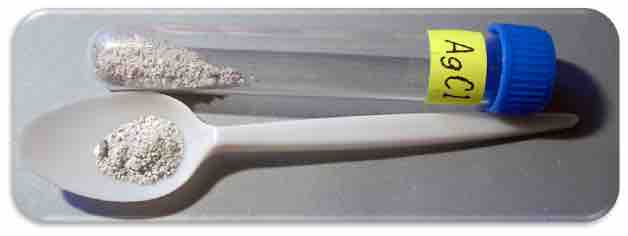Molecular Equation
There are various ways to write out precipitation reactions. In the molecular equation, electrolytes are written as salts followed by (aq) to indicate that the electrolytes are completely dissociated into their constituent ions; the (aq) designation indicates that the ions are in aqueous solution. For example, aqueous calcium chloride's reaction with aqueous silver nitrate can be written as follows:
On the right hand side of the equation, the precipitant (AgCl) is written in its full formula and designated as a solid, since this is the precipitate that is formed in the reaction. Note that the remaining salt, Ca(NO3)2, is still designed with (aq) to indicate that the ions are dissociated in solution.
Complete Ionic and Net Ionic Equations
Because the reactants and one of the products are strong electrolytes, it is possible to write them out in terms of their constituent ions. The resulting equation is known as the complete ionic equation, and it looks as follows:
In this equation, every ion is written out on both sides. The equation is balanced with the molar amount of each ion preceding it. This can be simplified to the net or complete ionic equation, which is shown below:
In this representation, the ions that are uninvolved in the precipitation reaction (
The precipitated silver chloride appears as a white solid .

Silver chloride
Silver chloride is a precipitant of silver and chloride ions reacting in solution.
The